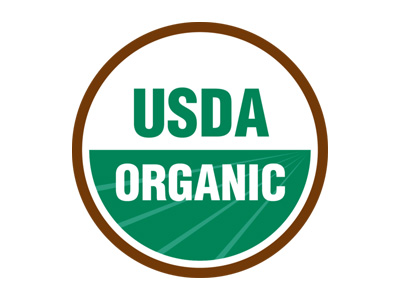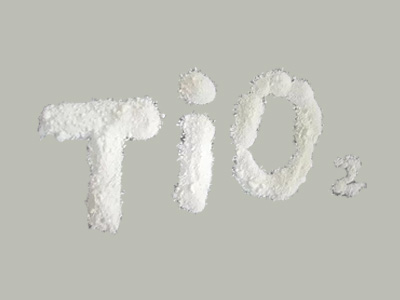On January 23, 2023, the EU submitted to the WTO Notification G/SPS/N/EU/611, proposing to amend part of Table 1 (positive list), Table 2 (Restricted Substances Group) and Table 3 (Verification of Conformity Statement) in Annex I to Regulation (EU) 10/2011 on plastic materials in contact with Food.

On 12 July 2023, the Commission published in the Official Journal of the European Union the 16th amending Regulation (EU)2023/1442 of Regulation (EU)10/2011 on Plastics in contact with food (OJL177, 12 July 2023, pp. 45-58). The revised contents of Table 1 to Table 3 of Annex I of (EU) 10/2011 are basically consistent with the draft, and the main substances involved include: salicylic acid, untreated wood powder and fiber, phthalic plasticizers, triethanolamine, perchlorate, antioxidant 1222 and so on. The new regulations have come into effect on August 1, 2023, and European food packaging companies need to pay attention to updates in a timely manner.

Revised content:
1.The authorization of FCM Substance No. 96 (untreated wood meal and wood fiber) and FCM substance No. 121 (salicylic acid) is revoked (since then, only the authorization of FCM plant fiber substance No. 1060 “ground sunflower seed shells” remains).
2. Tighten the requirements for phthalic plasticizers (DAP migration limits remain unchanged) :
·DBP migration limit decreased from 0.3mg/kg to 0.12mg/kg;
·BBP migration limit reduced from 30mg/kg to 6mg/kg;
·DEHP migration limit reduced from 1.5mg/kg to 0.6mg/kg;
·DIDP and DINP* migration limits (Group 26 SML(T)) reduced from 9mg/kg to 1.8mg/kg;
· The sum of DBP, DIBP, BBP and DEHP is group 36 SML(T), and is expressed as the equivalent of DEHP by the following formula: that is, the limit value of DBP*5 + DIBP*4 + BBP*0.1 + DEHP*1 is SML(T) : 0.6mg/kg;
*DINP may not be used in combination with FCM No.157, 159, 283, or 1085 i.e. DBP/BBP/DEHP/DIBP.
| Substance | CAS No. | FOM Substance number | (EU)2023/1441 demand | Legacy requirements |
|---|---|---|---|---|
| DBP | 84-74-2 | 157 | SML:0.12 mg/kg Group 32 SML(T):60 mg/kg (Added FCM No 1078 and 1085) Group 36 SML(T):0.6 mg/kg (Calculated in DEHP, the formula is: DBP * * 4 + 5 + DIBP BBP + DEHP * 1 * 0.1) | SML: 0.3mg /kg Group 32 SML(T):60 mg/kg |
| BBP | 85-68-7 | 159 | SML:6 mg/kg Group 32 SML(T):60 mg/kg (Added FCM No 1078 and 1085) Group 36 SML(T):0.6 mg/kg (Calculated in DEHP, the formula is: DBP * * 4 + 5 + DIBP BBP + DEHP * 1 * 0.1) | SML: 30 mg /kg Group 32 SML(T):60 mg/kg |
| DEHP | 117-81-7 | 283 | SML:0.6 mg/kg Group 32 SML(T):60 mg/kg (Added FCM No 1078 and 1085) Group 36 SML(T):0.6 mg/kg (In DEHP, calculation formula: DBP5+DIBP4+BBP0.1+DEHP1) | SML:1.5 mg/kg Group 32 SML (T):60 mg/kg |
| DINP | 68515-48-0 28553-12-0 | 728 | Group 26 SML(T):1.8 mg/kg Group 32 SML(T):60 mg/kg (Added FCM No 1078 and 1085) Not to be combined with FCM No 157, 159, 283 or 1085 | Group 26 SML (T):9 mg/kg Group 32 SML (T):60 mg/kg |
| DIDP | 68515-49-1 26761-40-0 | 729 | Group 26 SML(T):1.8 mg/kg Group 32 SML(T):60 mg/kg (Added FCM No 1078 and 1085) | Group 26 SML (T):9 mg/kg Group 32 SML (T):60 mg/kg |
3. The limit value of substances in Group 37, composed of triethanolamine (CAS No. 102-71-6) and the dimer of FCM substance (triethanolamine – sodium perchlorate) No. 1080 (CAS No. 156157-97-0), SML(T) : 0.05mg/kg, calculated by the sum of triethanolamine and hydrochloride admixture;
4.perchloric acid and its salts and FCM substance No. 1080 (triethanolamine – sodium perchlorate) dimer (CASNo. 156157-97-0) composed of group 38 substances, the limit is SML(T) : 0.002mg/kg, in terms of perchlorate (and to comply with the requirements of EU 10/2011 Annex I Table 3, Point 4);
5. Group 7 substance SML(T) is added to FCM substance No. 1081 [N, n-bis (2-hydroxyethyl) stearamine is partially esterified by saturated C16/C18 fatty acids], Group 32 substance SML(T) added trioctyl trimelate FCM substance No. 1078 (CAS No.3319-31-1) and FCM substance No. 1085 (DIBP);
6. Table 3 of Appendix I adds the description of Article 30 on the verification of the conformity of FCM No. 1081;
In addition to the above 6 points, a number of authorized substances have also been revised accordingly, such as antioxidant 1222 (CAS No. 976-56-7), PHBH (CAS No.147398-31-0) and phosphite, triphenyl ester, α-hydrogen-omega-hydroxyl poly [oxygen (methyl-1, 2-ethyldiyl)], C10-16 alkyl ester polymer (FCM No. 1076 substance), etc.
Interim measures:
1. Plastic materials and articles which comply with Regulation (EU) No. 10/2011 applicable before the entry into force of this Regulation may remain on the market for the first time before 1 February 2025 until stocks are exhausted.
2. If a product from an intermediate stage in the manufacture of plastic materials and articles or a substance used in the manufacture of such products, materials or articles complies with Regulation (EU) No. 10/2011 applicable before entry and is placed on the market for the first time after 1 May 2024, but does not comply with this Regulation, the declaration of compliance for the substance or product shall indicate that it does not comply with the rules in force, It can only be used to manufacture plastic materials and products placed on the market before February 1, 2025.
3. Plastic materials and articles made from salicylic acid (FCM No. 121) or from untreated wood meal or specific wood fibre (FCM No. 96) may continue to be placed on the market after 1 February 2025, provided that the following conditions are met:
· An application for authorisation of the substance has been submitted to the competent authority in accordance with Article 9 of Regulation (EC) No 1935/2004 before 1 August 2024;
· Plastic materials and articles manufactured using the substance are limited to the intended conditions of use described in the application;
·The information provided to the Authority in accordance with Article 9(1)(b) of Regulation (EC) No 1935/2004 includes a statement that the application is made in accordance with this paragraph;
· The Authority considers the application valid.
4.Plastic materials and articles made using the substance or untreated wood flour or fibres may continue to be used until the applicant withdraws his application or until the Commission approves or rejects the use of the substance by decision in accordance with Article 11(1) of Regulation (EC)No 1935/2004.
Testing services:
Meriere Nutrition Science (China) has many years of experience in the detection of food contact materials. For the detection of phthalate migration, it can meet the latest regulatory requirements of the European Union, and can also test according to the national standard method to meet the domestic requirements. The minimum detection report limit is 0.01mg/kg, which meets the testing needs of enterprises and helps products enter the EU market smoothly.


